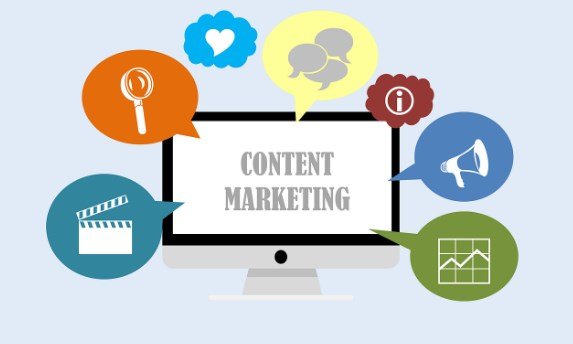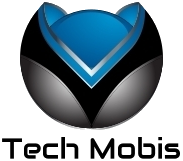
Tips for a successful content marketing strategy – You’re partly correct if you believe that content is made up of a collection of blogs, Tweets, and web pages that work together to achieve a company’s objectives. While social outreach, branding, and high-quality material are all vital aspects of content management, there’s a lot more to it.
Tips for a successful content marketing strategy – If you’re involved in or want to be involved in any element of digital marketing, you’ll want to gain a thorough grasp of what goes into creating an effective content marketing plan. By doing an online content marketing course, you will be able to plan and make content strategies that will benefit your business. In this article, we’ll go over some of the main topics that any content manager or strategist should be familiar with in order to execute a successful digital marketing campaign.
Contents
Tips for a Successful Content Marketing Strategy
Understand the Content Marketing (Sales) Funnel
The sales funnel is a wide concept that represents the buyer’s decision-making process, with awareness, assessment, and purchase being the three important steps. Anyone working in sales or marketing should pay close attention to this process to obtain a better grasp of how buyers progress through the funnel.
To some extent, content marketing falls under the category of outreach, which means it belongs to the “head” of the sales funnel. To the untrained eye, this area of digital marketing may appear to be “far” off from the money-making (sales) portion of the funnel.
After the conversion “delight,” which translates to developing brand loyalty, there is a fourth step of the sales funnels with content marketing. As a result, content strategists should constantly keep four key stages of the funnel in mind:
- Acquiring new customers through outreach
- Completing the sale
- Persuading buyers to buy
- Process of developing brand loyalty, and encouraging customers to return.
Brand awareness and lead generation take place at the “top” of the funnel. It’s where you may cast a wide net to catch the widest potential audience and not only grow your following but also engage with them to learn more about your overall plan. A smart content strategist or manager, on the other hand, would know how to engage clients at every stage of the funnel.
View Your Content as Data
It’s not about how many blogs should be produced each month, how much time should be spent performing Facebook Live, or whether or not a company should write a whitepaper when it comes to content strategy. It is unquestionably about quality, but none of these elements are what strategy is all about. They are components, but they aren’t what will lead your strategic approach.
A smart content marketing strategy can engage audiences at every turn, and a skilled strategist needs to understand how their material is performing in order to do so. When you understand exactly how to spin your content to make it effective in one step, you can apply that knowledge to the next part of the funnel.
Analytics will direct your strategy. The strategist’s role is to meticulously monitor, track, watch, and report on the figures so that they may be fine-tuned and adjusted for higher conversions. You’ll need to keep track of where your clients are “coming from” and “going to.” To put it another way, you must constantly monitor traffic patterns.
Testing what you’re doing on a regular basis is the only way to obtain a good sense of your audience’s preferences, interests, and purchase habits. To move on to the next step of the process, you need to know how well the item is performing.
Plan it all
A effective strategy requires the creation of a calendar. A content calendar, like an editorial calendar for a traditional newspaper, can assist guide your approach over a certain period of time. Of course, you’ll want to include important dates like big holidays and industry-related events in this list. You’ll probably want to leave some “blank” areas for unexpected but relevant events or popular subjects for which you’ll need to develop content at the last minute.
You can use this calendar to plan not only what you’ll post, but also where you’ll post it. These days, having a multimedia plan that includes outreach such as guest posting and PR is essential. Consider how various distribution channels will fit into your overall sales plan.
Reuse the Content
As you contemplate distribution, keep in mind the many goals that different pieces of information services, how this can affect your marketing, and how you can save time and resources by combining multiple types of material. Establishing authority through guest blogging, writing blogs in combination with email series, and leveraging social media to develop tribes and groups are all things to consider.
It’s quite acceptable and effective to build a strategy around content chunks that can easily be recycled across several platforms and for various purposes. So, while you create all of your material (think multimedia), think about how it can be transferred simply in the future.
Also Read: Lead Generation for Content Marketing
Set a clear direction for your content.
Assume you’re a content strategist or manager with a great content strategy in place and a team of writers ready to go. You’ve devised a plan, identified the funnel, and created a calendar. In a broad sense, you’ve established what you want to express.
Many firms already have a large amount of content and a team of writers to develop it; these, as well as a set of analytics tools, are necessary. However, it’s critical for strategists to understand where different types of content fit within the marketing framework.
The following list is not exhaustive; it will undoubtedly vary depending on the situation. However, it’s a good idea to divide content types into different stages of the funnel so that everyone on the team understands what each one is for.
- Facebook advertisements, landing pages, explainer videos, and infographics are all good ways to get the word out.
- Social media, informative blog posts, case studies, and quizzes are all good ways to convert.
- Final thoughts: email campaigns, reviews, and questionnaires
- Exclusive discounts, whitepapers, e-mails, contests, and surveys are all used to keep customers interested.
It’s critical that you have this information ready to go well in advance of the deadline. You’ll also need to know which types of content work best in certain situations, such as with different audiences and across platforms.
To Conclude,
One of the most important characteristics of a successful content marketing strategy is the capacity to problem-solve and learn new things on a regular basis. Content marketing isn’t rocket science, but it does necessitate a certain amount of patience, creativity, and an analytical mindset. Though an effective strategy necessitates analytical thought, it is far from cut and dry, leaving plenty of room for creativity and, to some extent, experimentation.
You can opt for an online digital marketing course, and gain in-depth knowledge about content marketing as well as other digital marketing topics.
As you go over the above principles, keep in mind that you should always be thinking about new ideas and methods that you can utilize to improve your approach and reach new goals over time.










